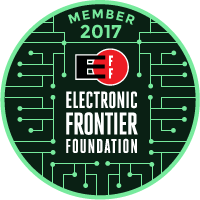Shortly after adopting the Model-View-Presenter pattern, I found myself copying the same service call into multiple presenters, as both a navigation panel and a main content area can sometimes display the same information. I decided to factor out the repeated service calls into a Service Facade (for lack of a better name) and inject the facade into each presenter that’s needed.
@Inject
public AddPrayerListPresenter(Display display, EventBus eventBus, PrayerListServiceFacade prayerListServiceFacade)
{
super(display, eventBus);
this.prayerListServiceFacade = prayerListServiceFacade;
bind();
}
Inside the service facade, I use constructor injection to get the event bus and dispatcher the same as in a presenter.
@Inject
public PrayerListServiceFacade(final EventBus eventBus,
final DispatchAsync dispatch, RoaModel roaModel)
{
this.dispatch = dispatch;
this.eventBus = eventBus;
this.model = roaModel;
}
public void refreshPrayerLists()
{
GWT.log("Calling actionFindLists", null);
// Fire event that marks start of the service call so listeners
// can show the AJAX wait thingy if desired
eventBus.fireEvent(new RefreshingPrayerListsEvent());
dispatch.execute(new FindPrayerListsAction(),
new AsyncCallback<FindPrayerListsResult>()
{
@Override
public void onFailure(Throwable e)
{
GWT.log(e.getMessage(), e);
Window.alert(e.getLocalizedMessage());
}
@Override
public void onSuccess(FindPrayerListsResult result)
{
eventBus.fireEvent(new PrayerListsModifiedEvent(result.getPrayerLists()));
}
});
}
The refreshPrayerLists() method contains the code that had been common to multiple presenters. There is one difference, however. When a presenter calls a service, it typically passes a DisplayCallback object, which gwt-presenter uses to call the view’s startProcessing() and stopProcessing() methods so you can show an Ajax wait thingy (er, progress indicator?) I could add a Display argument to the service method and create a DisplayCallback as usual; however, in this case, I want the refresh method to be called only once in conjunction with the event that necessitates a refresh (say, a new prayer list is added). And I want multiple widgets to be notified when the service call begins, and when it finishes. To accomplish this, I pass only a regular AsyncCallback object and fire an event both before and after the service call, to which any interested widget can listen.
In summary, the service facade provides a way to group all related service calls in one place and to factor out common calls from multiple presenters. Now all I need is a better name for it, as it sounds a little scary for my taste…
